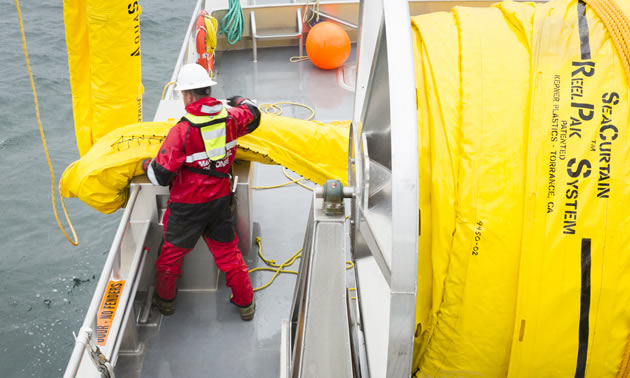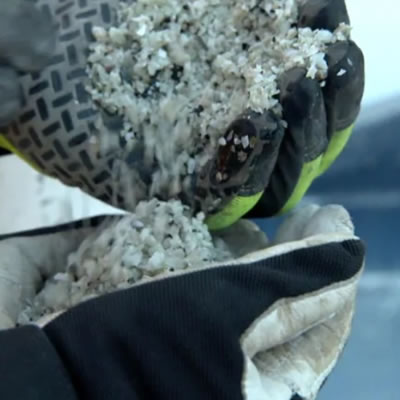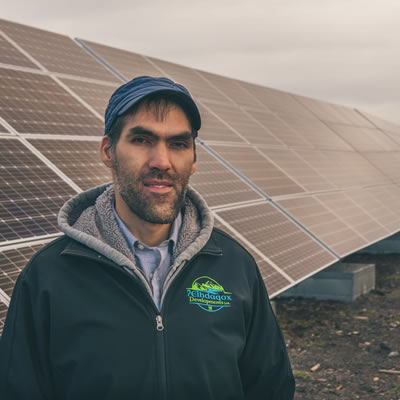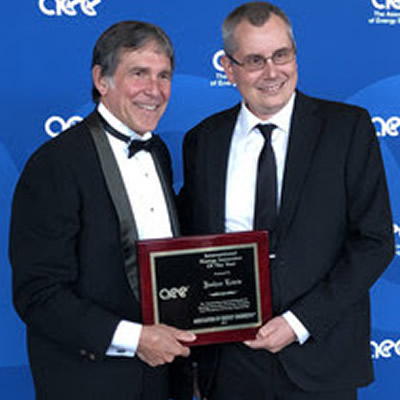Who pays for spill response organizations in Canada?

— Photo courtesy WCMRC
The Canadian spill response regime was created in 1995 to require the shipping and oil industries to respond to their own oil spills. Built on the polluter-pays principle, the regime is based on a partnership between the federal government and industry. The government provides the legislative and regulatory framework for the regime and oversees industry’s preparedness and response activities. As the creator of the risk, the shipping and oil industries bear the responsibility to respond to a spill and are always liable for spill response costs, including the operational costs of the regime.
History of WCMRC
WCMRC is the industry-funded response organization (RO) for Canada’s West Coast. Founded in 1976 as a small response co-op called Burrard Clean Operations, it was created by four oil companies that had refineries in Burrard Inlet, and by a pipeline company that was shipping oil out of the Inlet. The purpose of the co-op was to ensure there was a state of preparedness in Burrard Inlet to respond in the event of an oil spill.
In 1995, the Government of Canada adopted the National Oil Spill Preparedness and Response Regime, which included federally mandated regulations prescribing requirements and expectations for ROs. In response, Burrard Clean Operations incorporated to form WCMRC, and the five founding members became shareholders in the corporation. WCMRC’s shareholders are:
- Imperial Oil
- Shell Canada
- Chevron (now Parkland)
- Suncor
- Trans Mountain
- Industry Funding
WCMRC has over 2,300 members who, under the Canada Shipping Act, are required to have an arrangement with a certified RO. Members are required to pay an annual preparedness fee to ensure they will receive WCMRC’s response services, including equipment and supplies, in the event they pollute. WCMRC’s members can be broken down into two categories:
Shipping
Shipowners of vessels 400 gross tonnes or greater, or oil tankers over 150 gross tonnes or greater, calling on Canadian ports must have a mandated agreement with WCMRC and pay annual fees to the organization in order to be members. As of February 1, 2017, WCMRC’s annual membership registration fee is $775.
Oil Handling Facilities
Any facility that loads or unloads oil that is transferred across the marine environment must also pay fees to WCMRC. The fees paid by oil handling facilities are determined by the Bulk Oil Cargo Fee (BOCF), which is a fee applied to each tonne of oil transferred. As of February 1, 2017, the BOCF is $1.514 per tonne. The fees paid by oil handling facilities covered approximately 85 per cent of WCMRC’s operational costs.
WCMRC’s membership fees cover WCMRC’s annual operating costs. They do not cover the costs WCMRC incurs when responding to a spill which, as per Canada’s Marine Liability Act, must be paid by the polluter. Profits earned by WCMRC from a spill are either reinvested in the organization or used to offset future operating costs and lower membership fees.
WCMRC’s Shareholders
WCMRC’s shareholders, including Trans Mountain, form WCMRC’s Board of Directors and make decisions to ensure WCMRC meets the standards for response set out by Transport Canada under the Canada Shipping Act. The Board cannot influence the mandated standards or response requirements of ROs.
Until recently, WCMRC paid an annual dividend to its shareholders. However, in any given year, the membership fees paid by each of the shareholders through the BOCF far exceed any dividend they received. For example, in 2017 WCMRC’s shareholders received a combined return on equity of approximately $198,000 from WCMRC. That same year, their combined BOCF membership fees were $13.8 million.
This payment of return on equity from WCMRC to its shareholders has since concluded as part of a recent revision to WCMRC’s shareholder agreement. As of January 2018, WCMRC is taking steps to equalize shares amongst its shareholders until such time as shareholders will be limited to one share and one vote, and dividends will be eliminated.
In addition to paying the required membership fees, Trans Mountain is also currently paying a secondary fee structure to WCMRC to fund the organization’s spill response enhancements, which Trans Mountain volunteered to fund in the National Energy Board approval process of the Trans Mountain Expansion Project.
Federal Purchase of Trans Mountain
On May 29, 2018, the federal government announced the purchase of the Trans Mountain pipeline. The existing pipeline and the expansion project will be managed by a new crown corporation with a view to sell the pipeline in the future. WCMRC and its Board of Directors will look at the transition of shareholder status as the change in ownership at Trans Mountain unfolds.




